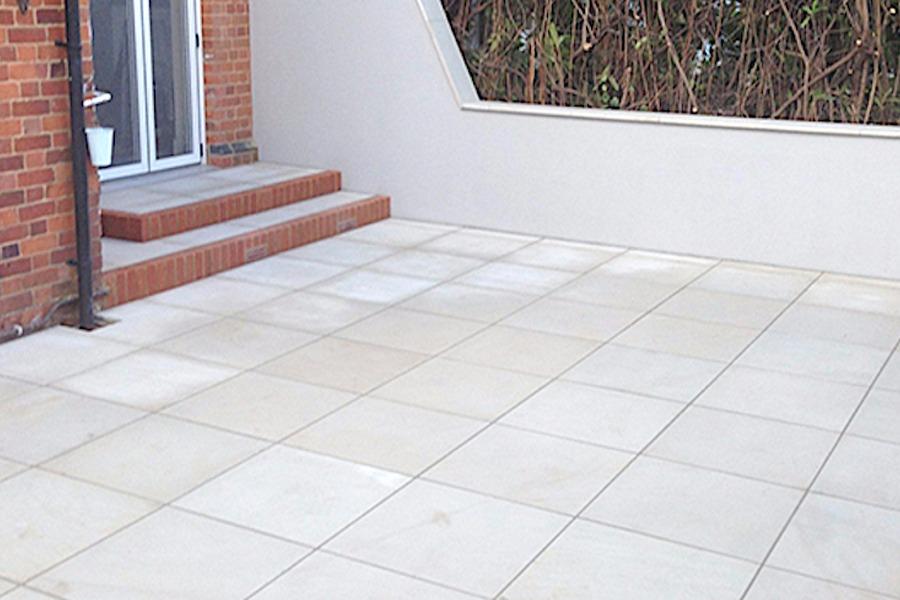You must have thought a lot about what outdoor flooring would look best for your space. But choosing from among all the available options can be a daunting task.
Out of all the natural stones there in the market, one that is turning spaces stunning and durable is Himalayan Sandstone pavers and tiles. It is one of the top choices of homeowners and architects because of its natural beauty, versatility and durability. There are a few factors that need to be kept in mind when you’re selecting this natural beauty—intended use, aesthetics, maintenance and budget.
Read on!
About Himalayan Sandstone
Natural stone, known as Himalayan Sandstone, is found in the Himalayan Mountain range, which is spread throughout Nepal, Bhutan, India and other nations. In addition to its unique appearance, it has been a dependable paving material for many ages, which has contributed to its popularity. Sandstone’s distinct quality can add the ideal ornamental element to any house. Many owners prefer the landscape material because of its endurance, especially in high-traffic areas. Moreover, Himalayan Sandstone has applications in both commercial and residential settings. It’s a great option if you want to remodel your patio, garden or pool deck. Sandstone pavers, on the other hand, also gives projects that are intended for commercial use a sense of warmth and richness.
How to choose between Himalayan Sandstone pavers and tiles?
Himalayan Sandstone Pavers
When we talk about Himalayan Sandstone pavers, you must understand that they are generally used in spaces with a lot of foot or vehicle traffic. The thickness of pavers are more than that of tiles, approximately 20mm to 30mm. These pavers need a tough and long-lasting surface, such as roads, paths and pool decks. The following are some major benefits of Himalayan sandstone pavers:
· Durability: Because they are thicker, pavers can tolerate traffic and large weights. Pavers made of Himalayan sandstone are renowned for being sturdy and resilient to deterioration.
· Natural Aesthetics: The natural and rustic appearance of Himalayan sandstone pavers can make your outdoor spaces more charming. Any setting gains character from the stone’s distinctive colour variations, which include earthy browns, reds and greys.
· Non-Slip Surface: Pavers are a safe alternative for places subject to moisture, such as pool decks and wet paths, because they offer a better grip and are less slippery than tiles.
· Versatility: Pavers are available in various sizes and thicknesses, which opens up innovative design possibilities such as unique layouts and varied laying patterns.
· Simple Maintenance: Compared to other outdoor flooring materials, pavers require less upkeep, even though they may occasionally need to be resealed to preserve their durability and beauty.
Himalayan Sandstone Tiles
Tiles can be used for a variety of interior and outdoor applications because they are smaller and thinner than pavers. Patios, courtyards, kitchens and bathrooms are among the areas where Himalayan sandstone tiles are frequently utilised. Himalayan sandstone tiles have the following main benefits:
· Versatility: Tiles can be utilised inside and outside in various environments. They work wonders at establishing a smooth transition between indoor and outdoor areas.
· Aesthetic Appeal: The mesmerising visual appeal of pavers is matched by the Himalayan sandstone tiles in terms of aesthetic appeal. Any place may feel cosy and welcoming with its organic hues and textures.
· Ease of Installation: Installing tiles is simpler and lighter than installing pavers. They are frequently better suited for do-it-yourself tasks or smaller-scale remodelling.
· Customisation: Because tiles are available in different sizes, a wide range of design options and complex patterns can be created.
· Low Maintenance: As pavers do, Himalayan sandstone tiles need little upkeep. Usually, regular cleaning and sealing will keep them looking their best.
How to Choose Between Pavers and Tiles
The decision between Himalayan sandstone tiles and pavers is primarily based on your personal style sense and the particular needs of your project. When choosing this choice, keep the following things in mind:
Goal of Use: Think about the area’s purpose. Pavers might be a better option because of their thickness and durability if you need outdoor flooring for a part of your home that receives a lot of traffic, such as the driveway or pool deck. Tiles might be the best choice for more adaptable applications, such as establishing a smooth indoor-outdoor flow.
Aesthetics: The breathtaking visual attraction of Himalayan sandstone is shared by pavers and tiles. Whether you want a sleeker, modern appearance (tiles) or a more rustic, natural aspect (pavers) may determine your preference.
Budget: In general, tiles are less expensive than pavers. When choosing your choice, consider the project’s size and budget.
Installation: Because tiles are easy to handle and lay, they can be a better option if you plan a do-it-yourself project or need it done more quickly. Conversely, expert pavers installation could be necessary, particularly for bigger areas.
Climate and Maintenance: Think about the climate where you live and how much maintenance you want. Pavers’ non-slip surface makes them potentially more appropriate for locations with high moisture content or severe weather. However, with the right sealing and upkeep, both pavers and tiles may survive a variety of conditions.
In conclusion, your project requirements and personal tastes will determine which Himalayan sandstone pavers and tiles are best for you. Both solutions provide the ruggedness and inherent beauty of Himalayan sandstone, which qualifies them for various outdoor and indoor uses. Consider things like the intended usage, appearance, cost, installation requirements and climate in your area before choosing. You can improve your living space’s aesthetic appeal and practicality by making the appropriate choice.



